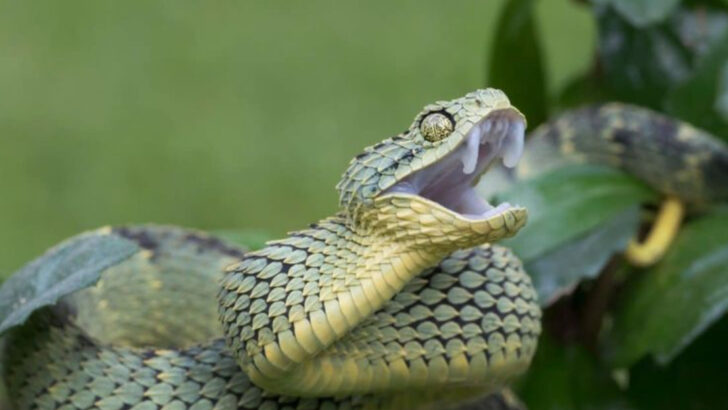Some snakes don’t just look scary—their eyes are from another world. Slit pupils. Glowing red. Gold like molten metal. Some even have eyes that see heat instead of light. These aren’t just peepers—they’re tools built for hunting, hiding, and pure intimidation. One glance can stop prey in its tracks—or make a human freeze in place. And in some species, those eerie eyes are more bizarre than anything Hollywood could dream up. Here are 14 snakes with the strangest, most otherworldly eyes in the animal kingdom. Don’t blink—they’re watching.
Reticulated Python
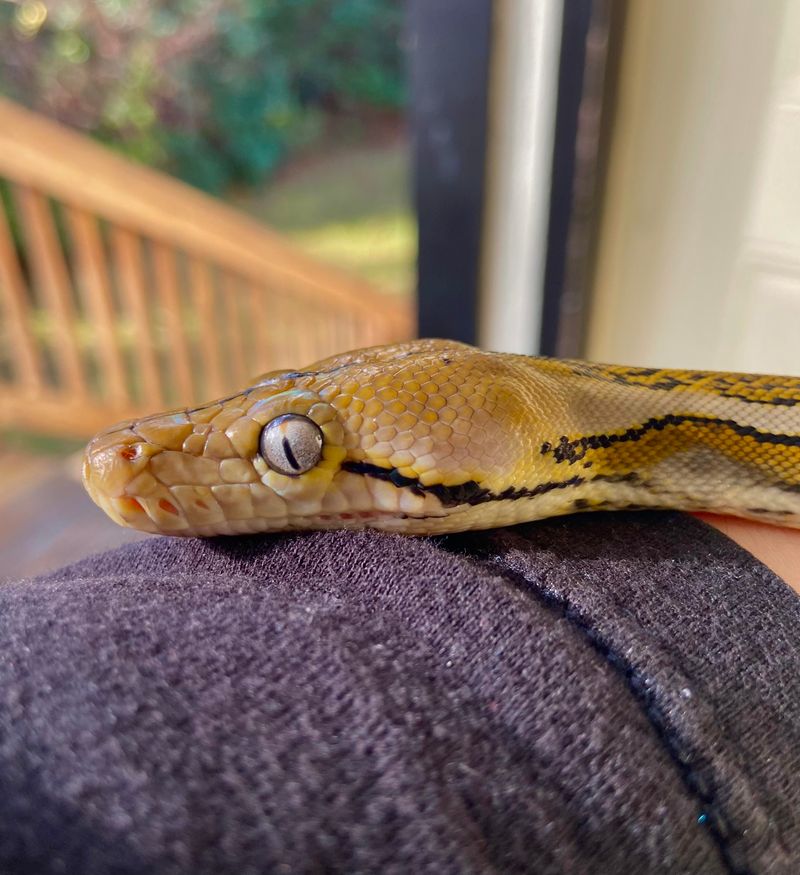
The reticulated python, known for its impressive size and bold patterns, possesses eyes that are nothing short of mesmerizing. These eyes reflect light like a prism, creating a kaleidoscope of colors that captivate observers. Imagine encountering this giant in its natural jungle habitat; its eyes would be the first thing to capture your attention.
With intricate patterns that echo the python’s own skin, the eyes appear as an extension of its beautiful, complex design. This remarkable adaptation helps the python blend seamlessly into its surroundings, becoming almost invisible to its prey. Such a striking feature leaves a lasting impression.
Cat-eyed Snake
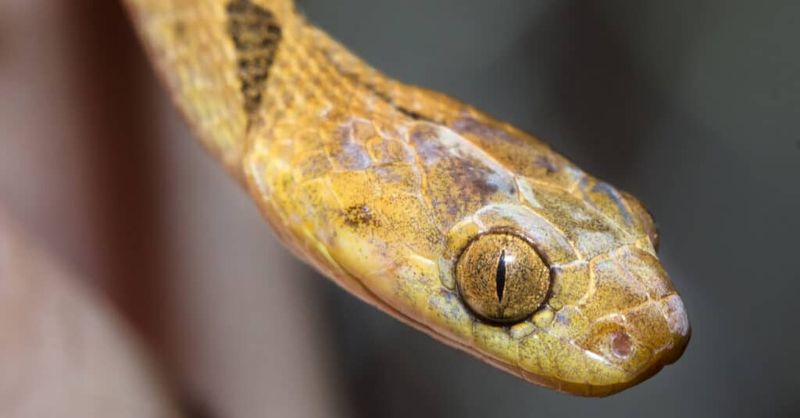
The cat-eyed snake earned its name due to its unique, cat-like vertical slit pupils. These fascinating eyes allow it to hunt efficiently in low-light conditions. Imagine the eerie glow of these eyes peering through the dense foliage of a tropical forest.
This adaptation is not only practical but adds an air of mystery to this elusive predator. The combination of its slender body and the captivating eyes gives it an almost mythical appearance. Truly, the cat-eyed snake’s eyes are like windows to another world, drawing you in with their mysterious allure.
Vine Snake
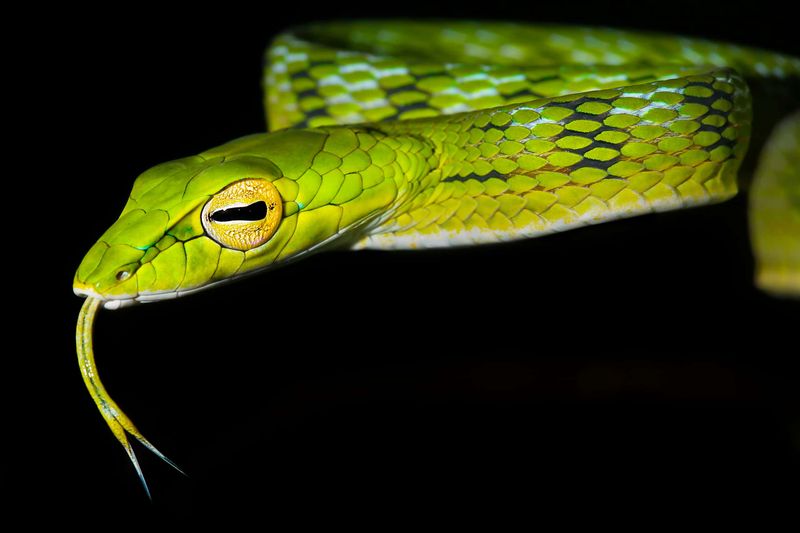
The vine snake’s eyes are a marvel of nature, featuring elongated horizontal pupils that enhance its ability to see clearly among the dense foliage. These unusual eyes are perfectly suited to its arboreal lifestyle, allowing it to blend into its leafy habitat effortlessly.
Imagine the vine snake, motionless among the leaves, its eyes scanning the environment for the slightest movement. This snake’s elegant form and piercing gaze create a sense of harmony with its surroundings. It’s as if the snake becomes one with the vines, a true testament to nature’s genius.
Gaboon Viper
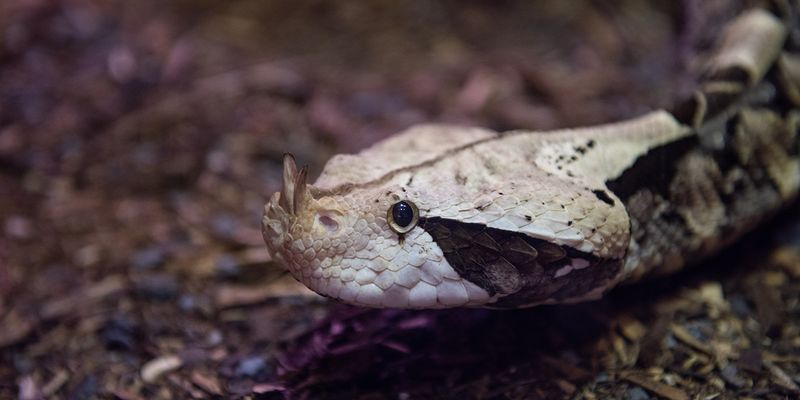
The Gaboon viper’s eyes are as expressive as they are large, providing a window into its surprisingly gentle nature. These big, soulful eyes seem to soften the appearance of this otherwise formidable predator.
Hidden among the dried leaves and undergrowth, the Gaboon viper relies on its camouflaged body and expressive eyes to remain unseen. It’s a breathtaking sight when those eyes lock onto something interesting, capturing the essence of the forest floor’s beauty and danger.
The Gaboon viper’s eyes are a testament to the intricate balance between predator and prey in nature.
Emerald Tree Boa
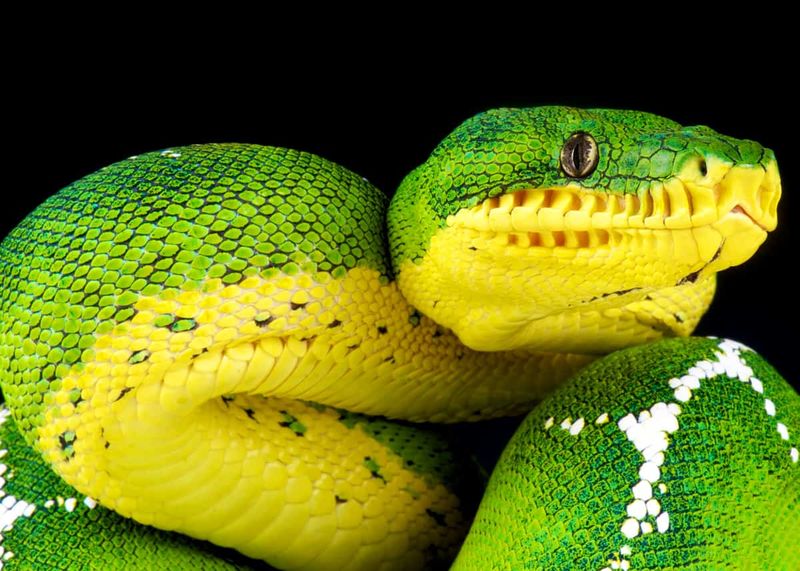
The emerald tree boa possesses eyes that mirror the rich green of its rainforest home. These striking eyes add to the snake’s visual appeal, making it a favorite among snake enthusiasts.
Perched on a branch, the emerald tree boa’s eyes seem to absorb the lush surroundings. This vivid coloration not only camouflages the snake but also serves as a symbol of the vibrant ecosystem it inhabits.
The snake’s eyes reflect the diversity and vitality of the rainforest, offering a glimpse into a world teeming with life and color.
Horned Viper
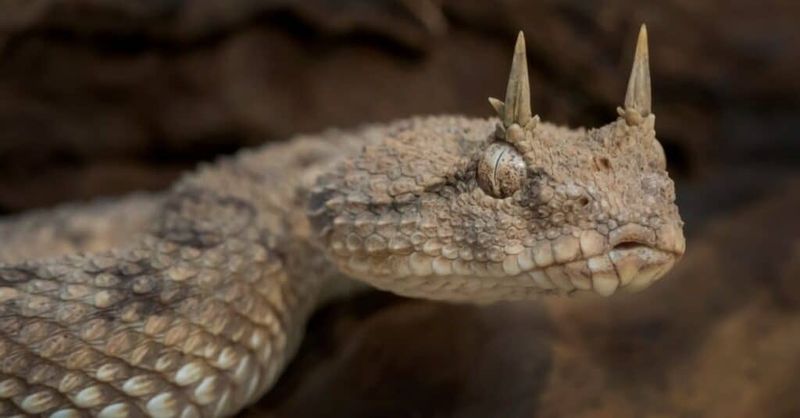
The horned viper is easily recognizable by the horn-like scales that protrude above its eyes, lending this snake an intimidating appearance. These horns add an element of surprise and purpose, aiding in camouflage among the desert rocks.
In the harsh desert environment, the horned viper’s eyes are adapted to detect the slightest movements. It’s a master of disguise, blending seamlessly with the sandy landscape.
The distinct horns above the eyes give this snake a prehistoric, almost mythical look, intriguing and captivating all who encounter it.
Bush Viper
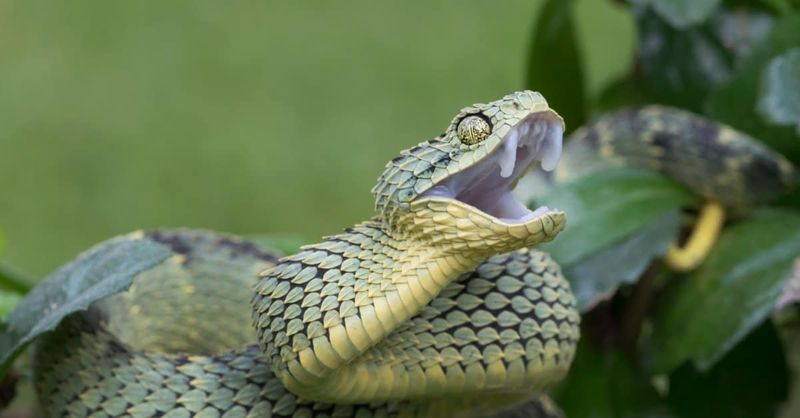
The bush viper’s eyes are surrounded by scales that match the vibrant colors of its body, creating a striking visual effect. These eyes seem to dance with color and life, drawing attention to the snake’s unique beauty.
In the dense forest, the bush viper’s colorful appearance might seem out of place, yet it serves a purpose. The eyes and the surrounding scales act as a deterrent to predators, signaling that this snake is not to be trifled with.
It’s a beautiful and lethal combination, enchanting yet dangerous.
White-lipped Pit Viper
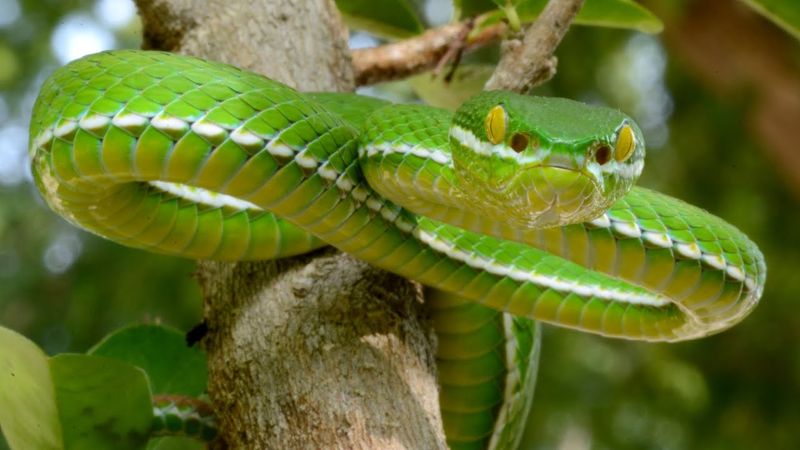
The white-lipped pit viper’s golden eyes are as captivating as they are deadly. These bright eyes are set against the viper’s distinctive white lips, creating a striking contrast that demands attention.
In its tropical habitat, the viper’s eyes serve a dual purpose: aiding in hunting and warding off potential threats. The golden hue reflects the sunlight, adding a glint of mystery and danger.
The unique combination of white lips and golden eyes sets this viper apart, a true wonder of the reptile world.
Boomslang Snake
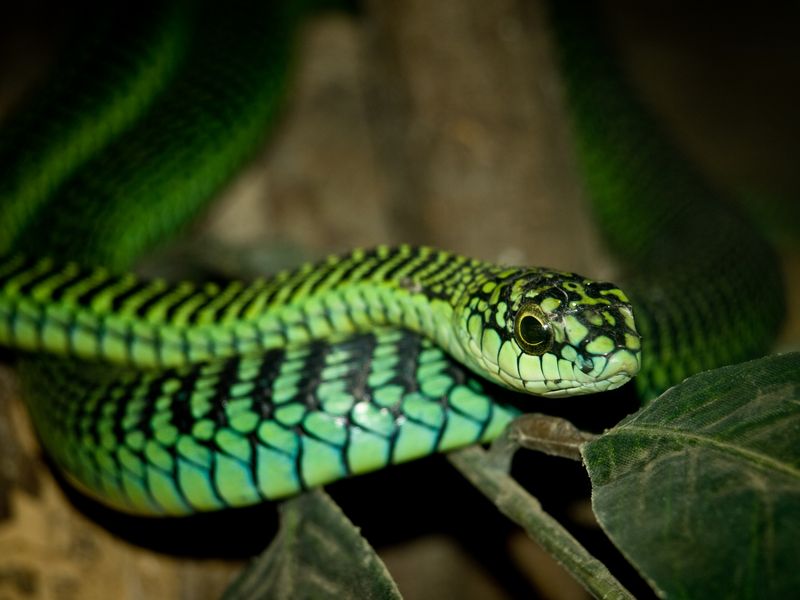
The boomslang snake is not only known for its venom but also for its large, round eyes that offer an innocent appearance. These eyes are a key feature for its arboreal lifestyle, providing excellent vision among the trees.
Perched comfortably among the branches, the boomslang’s eyes seem to hold a world of curiosity and intelligence. This unusual combination of deadly venom and charming eyes creates a fascinating duality.
The boomslang’s eyes invite you to take a closer look, revealing the complex nature of this intriguing snake.
Keelback Snake
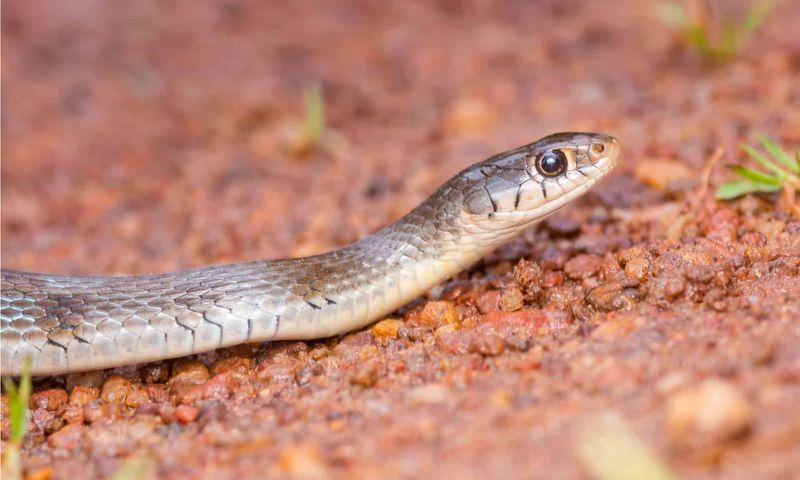
The keelback snake’s eyes have a glassy, reflective quality reminiscent of water, hinting at its affinity for aquatic environments. These eyes provide a window to the snake’s adaptability and survival skills.
Near a tranquil water source, the keelback’s eyes catch the light, creating an almost hypnotic effect. The reflective nature of its eyes is both mesmerizing and functional, aiding in spotting prey and predators.
This connection to water is not just physical but also symbolic, reflecting the snake’s ability to thrive in diverse environments.
Eyelash Viper
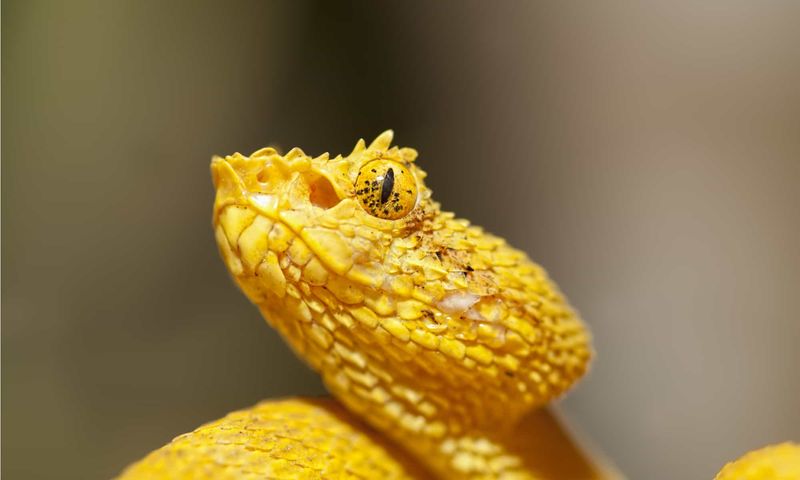
The eyelash viper’s name comes from the distinctive scale-like protrusions above its eyes, resembling eyelashes. These unique features add an element of whimsy to this otherwise lethal predator.
Within a lush, tropical forest, the eyelash viper’s vibrant coloration and unusual eyes create a captivating image. It’s as if this snake embodies the chaotic beauty of the jungle itself.
The “eyelashes” serve a practical purpose as well, aiding in camouflage and signaling a warning to potential threats.
Mangrove Snake
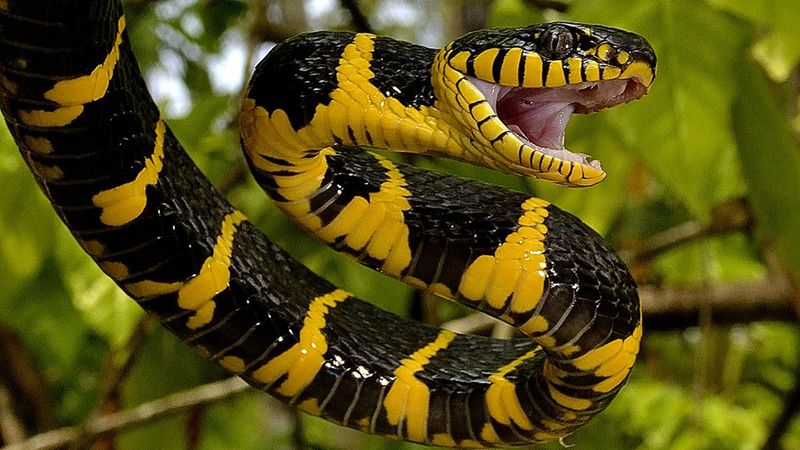
The mangrove snake’s piercing yellow eyes are a stark contrast to its dark body, creating an aura of mystery and allure. These eyes are perfectly suited to its nocturnal lifestyle, providing excellent vision in the dim light.
Slithering among the mangrove roots, the snake’s eyes seem to glow with an inner light, guiding it through the darkness. This striking feature is essential for hunting at night, adding to the snake’s enigmatic presence.
The mangrove snake’s eyes are not just functional but also an iconic part of its identity.
Tentacled Snake
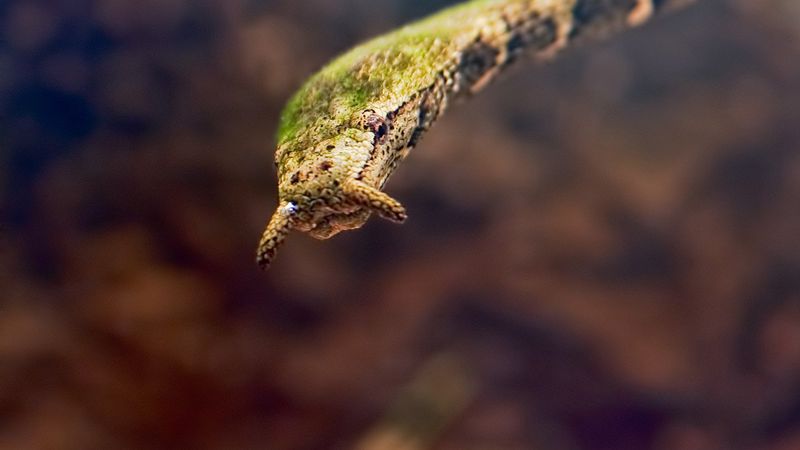
The tentacled snake’s eyes are accompanied by small, tactile tentacles, providing a unique adaptation for hunting in murky waters. These tentacles sense vibrations, helping the snake detect prey even when visibility is low.
In its aquatic environment, the tentacled snake’s eyes may seem ordinary, but it’s the combination of eyes and tentacles that makes it extraordinary. This adaptation is a marvel of evolution, offering insights into the complexity of survival strategies.
This snake’s unusual appearance is a curious reminder of nature’s endless creativity.
Burrowing Python
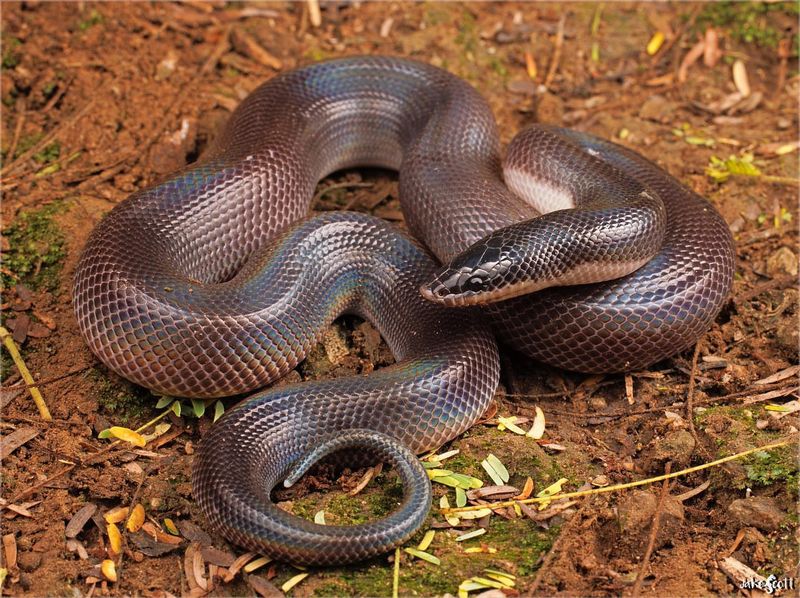
The burrowing python’s small, reduced eyes are a reflection of its subterranean lifestyle. These eyes, while less visually striking, are perfectly suited to its underground habitat.
Beneath the earth’s surface, the python relies more on other senses, but its eyes still play a crucial role. This adaptation allows the python to navigate through tight spaces with ease.
The burrowing python’s eyes remind us that beauty and function can take many forms, each serving a specific purpose in the dance of life.

